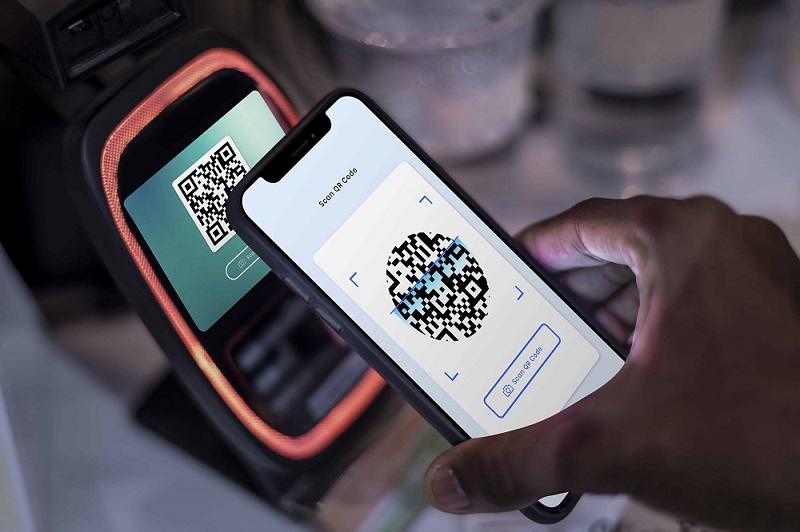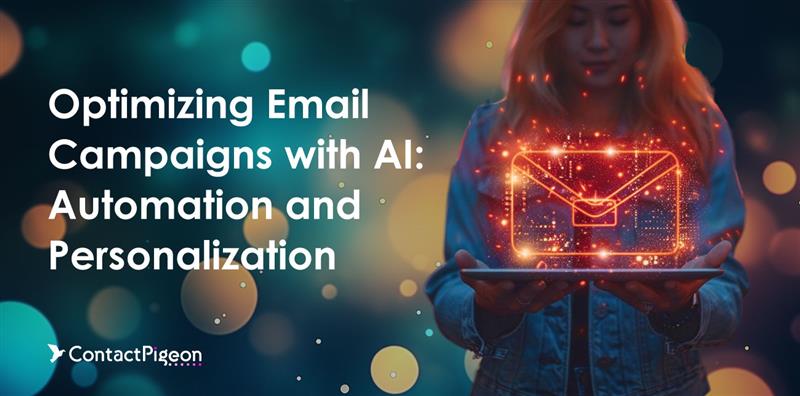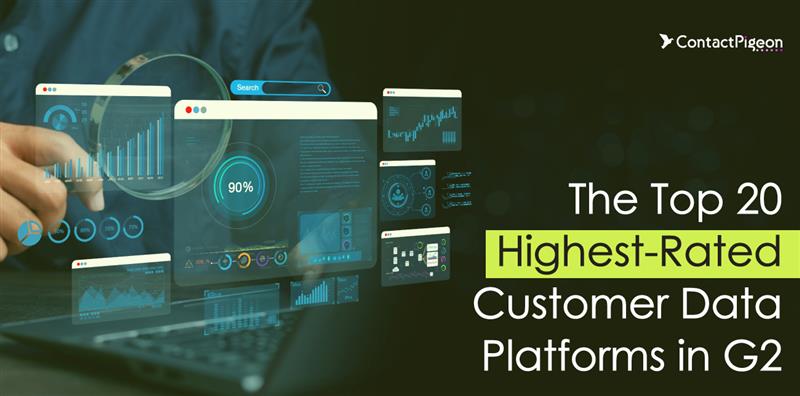It’s no secret that Covid-19 increased the urgency of digital transformation, with a 65% increase in digital customer interaction during the pandemic. Although, the disappointing realization that only 29% of customers receive the deep level of engagement they require, means that things are pretty serious. Unfortunately, those statistics apply to any business or organization with brand-consumers interactions and extend to a variety of cases.
Therefore, public sector companies and nonprofit organizations stand a lot to gain by using marketing activities to raise brand awareness, promote donations, and inspire customer engagement. Their marketing mix can include email marketing, in-person marketing events, social media marketing, and content creation. A strong marketing strategy is vital for any business that wishes to retain its existing customers and make a lasting impact on new ones.
Thus, a consistent image across multiple channels can help nonprofit and public service organizations raise the standards and achieve higher rates of efficiency, conversions, and retention. It also shows that their offerings are important and worthy of investment. This article explains 13 key omnichannel customer engagement strategies that public services and nonprofit organizations can use to drive engagement, revenue and improve community relations.
Table of Contents
- > Public Services, Nonprofits & COVID-19: The impact
- > 13 Effective customer engagement strategies for public sector companies and nonprofit organizations
- > Omnichannel Customer Engagement Strategies for the Public Sector
- > Omnichannel Customer Engagement Strategies for Nonprofit Organizations
- > Engage with your audience, for good.
Public Services, Nonprofits & COVID-19: The impact
As far as government organizations go, they were not left out of this worldwide mess. Service-related industries saw a significant need for radical changes amidst the pandemic. The public sector had to adjust fast in these turbulent times and meet the needs of its citizens.
Digitalizing and streamlining everyday workflows was crucial, as it would increase the public sector’s capacity to cope adequately with customer service deliverables. As more people had to stay home, public sector businesses had to increase their dynamic capabilities, but also face challenges related to stable and balanced growth rates. Thus, the only way forward was investments in digital platforms that would process massive amounts of data information and offer modern, immediate solutions to complex situations.
Of course, the ongoing global pandemic has had a major impact on nonprofits. As people began losing jobs in the community, they relied on donations from nonprofits more than ever before. A significant number of nonprofits saw higher demands for their services than in previous years.
Many organizations responded to the crisis by donating more to nonprofits than in years past, especially in early 2020. But the increased donations from businesses didn’t do enough to curb the loss of donations from individuals, and 75% of nonprofits report that the pandemic has negatively affected overall funding.
13 Effective customer engagement strategies for public sector companies and nonprofit organizations
Keeping customers engaged is key to increasing overall community relationships. Below, we will focus on 13 effective customer engagement strategies for nonprofit organizations and public sector brands to increase engagement and brand loyalty.
Omnichannel Customer Engagement Strategies for the Public Sector
Strategy #1: Start with a weekly newsletter to stay in touch.
Why It Works: Email newsletters are a vital customer engagement strategy for nonprofit organizations and public services. Sending out a weekly newsletter telling previous donors and donation recipients about a brand’s efforts in the community works because it keeps the nonprofit brand front-and-center in the customers’ minds.
Accordingly, public service organizations can develop a similar newsletter weekly strategy to keep their customers informed about company news, updates and guidelines. What is more, the public sector can benefit from setting up automated transactional emails that will respond to their client’s movements.
Organizations increase brand recognition through regular emails and remind their customers why they’ve chosen the organization in the past. As a result, those same customers are more likely to choose to support the organization the next time they’re looking to donate to a nonprofit. As far as the public sector is concerned, client engagement is fundamental, and a direct line of communication between a brand and a customer is the first step.
Strategy #2: Integrate an omnichannel chat solution in your website

Why It Works: There’s no denying that public services handle a large number of incoming customer calls, and the extensive workload is oftentimes difficult to manage. An omnichannel chat solution will provide government employees with the ability to answer faster and more efficiently to their customers.
Additionally, a built-in chatbot functionality will enable online customers to solve common issues even if no agents are available or involved. The chatbot will prioritize which cases require a representative, both lessening the overall load of cases while increasing productivity and resolution rates.
Strategy #3: Add 2-Way QR Codes to your physical locations

Why It Works: Implementing 2-Way QR Codes into your omnichannel strategy is one of the most efficient ways to create a bridge between your customers’ physical and digital activity. As customers scan the 2-way QR codes, whether they are known visitors or new ones, each customer profile will be updated accordingly, presenting different content to each case. Achieving a complete 360o marketing approach, the QR codes will increase your acquisitions, remarketing efforts, and conversion rates.
Strategy #4: Set up automated push notifications to increase your company’s reach
Why It Works: Once organizations set up an automated push notification, they work without any additional effort. This customer engagement strategy is an easy set-it-and-forget-it form of marketing.
Push notifications work to encourage customer engagement because they send information about a brand directly to their customers’ phones — a platform most people check continually while they’re awake — or directly to their web browsers when they take certain online actions. This allows push notifications to transmit information to the target audience in real-time.
Note that customers must agree to get push notifications, so the only customers who receive them are those who have opted in. As a result, these tend to be the customers most likely to take action.
Strategy #5: Use exit-intent pop-ups promoting any expiring events.

Why It Works: Exit-intent pop-ups invite customers to take certain actions before they leave a website, directly prompting customer engagement in the process. Although these shouldn’t be overused, targeted pop-ups that direct customers toward specific events can be a great way to prompt customers to take action. This works because it targets customers who have already chosen to visit the website and are likely interested in the brand.
Strategy #6: Create automated email drip campaigns to nurture relationships.
Why It Works: In most omnichannel customer engagements platforms, users can segment their customers based on their previous behaviors. For example, an organization may have a list of donors, a list of service recipients, and a list of people who have just visited the site and subscribed to their newsletter. Email drip campaigns allow organizations to nurture these different relationships by sending out a series of automated emails to their unique segments of recipients.
This strategy builds customer engagement by targeting email recipients based on their behavior and shows that the organization pays attention and cares about its customers. Drip campaigns provide organizations with one additional avenue for explaining the purpose of their brand, improving recognition, and helping customers relate to the services offered and understand why those services will benefit them in the long run.
Strategy #7: Increase interest with weekly blog posts and update your website regularly
Why It Works: Creating regular content on an organization’s website improves search engine optimization and increases organic web traffic. Search engines like Google reward brands that update their content regularly, which is one major reason weekly blog posts have a great return on investment for brands.
Weekly blog posts can also help direct more people to sign up for email newsletters. Additionally, organizations can promote their blog on social media, which gives them content to post regularly. By connecting these avenues of engagement, brands improve the omnichannel customer experience while increasing overall interest in what their organization does.
Omnichannel Customer Engagement Strategies for Nonprofit Organizations
Strategy #1: Send personalized thank you emails

Why It Works: When someone donates, it’s important for the organization to send an email to the donor thanking them for their contribution to the cause. A thank you email shows appreciation for their donation and can further educate donors about how their money is used and how the organization works. This can further the relationship between the organization and the donor and improve future customer engagement. Ultimately, it can encourage donors to give money again in the future.
Sending personalized emails takes this practice a step further. When reaching out to donors and addressing them by name, the interaction feels more intimate, which can improve and build the donor community.
Strategy #2: Use preference duels to encourage giving
Why It Works: Instead of just asking for donations, one of the most clever customer engagement strategies for nonprofit organizations is to invite people to use their money to vote for something. This can be something frivolous, like their favorite ice cream flavor, or something more impactful, like the best name to give to the new puppy in an animal shelter.
This may seem like a strange strategy to use, but A/B testing shows that when customers are given a choice on something to vote for rather than simply being asked to donate, they donate an average of 25-50% more per campaign.
Strategy #3: Work with influencers to gain awareness and increase donations
Why It Works: The term “influencers” refers to individuals with a strong online presence via a blog or social media platforms like Instagram, Tik-Tok, or YouTube. Regardless of the platform, influencers spend time and energy creating a relationship with their audience. For this reason, when organizations use influencers to promote their nonprofits, it allows them to capitalize on the influencers’ audience and build customer engagement.
Many influencers are happy to work with nonprofit organizations since doing so can show their audience they care about important community causes. The key is for organizations to find an influencer that already reaches their target audience in some way and to help them develop a passion for the organization’s work. After that, organizations can sponsor events like charity streams that encourage the influencers’ audience members to donate.
Strategy #4: Educate customers with informative webinars

Why It Works: One of the best customer engagement strategies for NGOs is to provide tangible value to members of their community. Informational webinars with volunteer guest speakers are an easy way to provide this value and encourage customer engagement in the process.
By hosting regular events that the community cares about, nonprofit organizations prove their value to the community. This increases the chances that community decision-makers will choose to sponsor that organization over other nonprofits that have a less visible influence on the good of the community.
Strategy #5: Host in-person or hybrid events worth attending.

Why It Works: Even though COVID-19 is still a reality, people are beginning to look for more in-person events to attend. These in-person events may look different than they have in years past, with fewer attendees per event and a priority given to hybrid events that offer online viewing options or other online components. However, hosting some in-person events can help drum up engagement for nonprofit organizations.
In-person events allow potential donors to put a face to an organization. They provide a tangible experience, which increases the likelihood of people remembering the organization. They also allow organizations to advertise their services to low-income populations who might not have regular internet access, which can help the organization provide more benefits to their community.
Strategy #6: Create challenges and encourage people to post results on social media.
Why It Works: People love a good challenge. With the advent of social media, it’s easy to use an online challenge to get people excited to talk about a brand.
The key to creating the type of challenge apt to go viral is to ensure it has a low barrier to entry. A good challenge is something people can do quickly and easily without spending a lot of money.
Start the challenge with a brief explanation of how it relates to the nonprofit and what it represents. Then, encourage participants to show their results and pass the challenge on to two to three friends. Finally, create a unique hashtag so that whenever people participate in the challenge, it immediately kicks back to the sponsoring brand and improves their social media efforts
Bonus Tip: Don’t forget to set up remarketing ad campaigns to maximize conversions. It’s a no-brainer best practice that can be implemented directly via the ad platforms or via powerful customer engagement platforms like ContactPigeon. You must choose carefully your customer engagement platform to fit your business needs.
Engage with your audience, for good.
Not all nonprofit organizations or public service teams have the same needs. The first step to determining the best customer engagement strategies for your company is to clarify the organization’s business goals for the upcoming quarter or year. With goals in mind, you can decide which actions make the most sense for your brand and implement them accordingly.
By trying multiple approaches and tracking analytics from each, you can determine which strategies have the most significant impact on your omnichannel customer engagement strategy. In the future, you can invest more time and money amplifying those strategies to get the best return on your investment. Learn more about top customer engagement strategies by booking a free 30-minute customer engagement consultation with ContactPigeon today.




